Communism is a political and economic system that is characterized by government ownership of land and capital (wealth). Communism is also a theory (set of ideas) concerned with social justice. In practice, however, Communism has been characterized by powerful and often brutal totalitarian governments. A totalitarian government is one in which the state has absolute control over almost every part of people’s lives. Communism became one of the most powerful forces in the world and shaped much of history from the early 1900’s to the 1990’s. Some people have considered Communism the greatest threat to world peace. Others have looked on it as the world’s greatest hope.
The term communism has several meanings. Communism can be a form of government, an economic system, a revolutionary movement, a way of life, or a goal or ideal. Communism is also a theory about how and why history develops, and in what direction it is developing. These ideas were developed mainly by V. I. Lenin from the writings of Karl Marx. Lenin was a Russian revolutionary leader of the early 1900’s, and Marx was a German social philosopher—a thinker who studies society and human behavior—of the 1800’s.
According to Communists, their long-range goal is a society that provides equality and economic security for all. To achieve this goal, Communism has required government ownership rather than private ownership of land, factories, and other economic resources, called the means of production. Government planning of economic activity and strict rule by a single party with Communist ideals are also features of Communist governments.
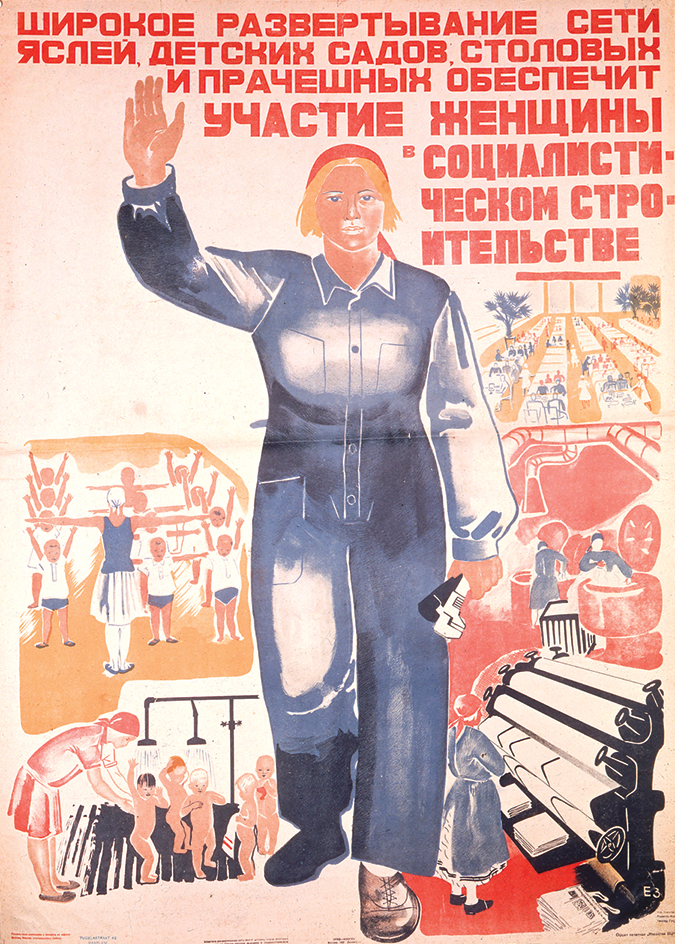
During the 1900’s, millions of people lived under Communist rule. In 1917, Russia became the first state to be controlled by a Communist party. Russia joined with three other territories in 1922 to form the Union of Soviet Socialist Republics (U.S.S.R.), or Soviet Union. By 1940, 12 more republics were added, and the Soviet Union had become one of the most powerful countries in the world.
After World War II (1939-1945), Soviet troops occupied most of Eastern Europe. The Soviet Union was thus able to help Communist governments take power in that region. In 1949, the Chinese Communist Party won a civil war for control of China.
The rapid spread of Communism after World War II brought about a struggle for international power and influence between Communist countries and non-Communist countries. This struggle was known as the Cold War. Events in the late 1980’s and early 1990’s marked the end of the Cold War. These events included the collapse of several Communist governments in Eastern Europe in 1989 and the fall of Communism in the Soviet Union in 1991. By 1992, Communist parties remained in power in only a small number of countries, including China, Cuba, Laos, North Korea, and Vietnam.
The terms Communism and socialism are frequently confused. Communists and socialists both seek public ownership or regulation of the principal means of production. But most socialists favor peaceful and legal methods to achieve their goals, while Communists have often used force without regard to law. Socialism may or may not be based on the teachings of Marx. Communism is based on the teachings of both Marx and Lenin.
For a more complete understanding of how Communism compares with other political or economic systems, see Capitalism (How capitalism differs from central planning); Government (Forms of government); and Socialism.
Communism in theory
The Communism that developed in the 1900’s was based on the theories of Marx as interpreted and modified by Lenin. These theories are often called Marxism-Leninism.
Early communism.
The word communism comes from the Latin word communis, which means common or belonging to all. The idea of communal property dates at least from the time of the early Greeks. In the 300’s B.C., the Greek philosopher Plato discussed communal ideas in The Republic. In that work, Plato proposed that a ruling class should own everything in common and put the welfare of the state above all personal desires. Later, a number of early Christian groups had some form of community ownership of property.
Over the centuries, many philosophers and reformers supported such communist ideals as community ownership and social equality. Then, in the 1800’s, Marx transformed communism into a revolutionary movement.
The ideas of Marx.
Marx’s basic ideas were first expressed in the Communist Manifesto (1848), a pamphlet that he wrote with Friedrich Engels, a German economist. Marx believed the only way to ensure a happy, harmonious society was to put the workers in control. His ideas were partly a reaction against hardships suffered by workers in England, France, and Germany during the Industrial Revolution, a period of rapid growth in manufacturing from the 1700’s to the mid-1800’s. Most factory workers and miners during this period were poorly paid and worked long hours under unhealthful, and even dangerous, conditions.
Marx believed that the triumph of communism was inevitable. He taught that history follows certain unchangeable laws as it advances from one stage to the next. Each stage is marked by struggles that lead to a higher stage of development. Communism, Marx declared, is the highest and final stage of development.
According to Marx, the key to understanding the stages of historical development is knowing the relationship between different classes of people in producing goods. He claimed that the owners of factories and other means of production—the ruling class—use their economic power to force their will on the people. Marx assumed that the ruling class would never willingly give up power, and so class struggle and violence were inevitable. He viewed the class struggle between the rulers and the ruled as the means by which history moves from one stage to the next.
Marx called for the abolition of capitalism, an economic system in which the chief means of production are privately owned. Under capitalism, Marx believed, a struggle takes place between the bourgeoisie << `boor` zhwah ZEE >> and the proletariat. The bourgeoisie are the owners and managers of the means of production, and the proletariat are the workers. Marx argued that workers do not receive full value for their labor under capitalism, because the owners keep the profits. He believed that, under capitalism, wealth would become concentrated in the hands of a few people. The workers’ living standards would continually grow worse.
Finally, the workers would revolt against capitalism and seize control of industry and the government.
The workers would first establish a socialist state. Its government would be a dictatorship of the proletariat, a government controlled by workers. This government would work to establish a classless communist society. After the elimination of classes, everyone would live in peace, prosperity, and freedom. There would be no more need for governments, police, or armies, and all these institutions would gradually disappear.
European reality in the early 1900’s.
By the early 1900’s, capitalism was more successful in Europe’s industrialized nations than Marx had predicted. Economic modernization was causing the bourgeoisie to grow larger rather than smaller. The formation of labor unions, increased production of consumer goods, and the growth of democracy had led to a rise in living standards. Most Europeans felt an increasing sense of national pride, and few had turned away from their political systems.
During this period, many Marxists began to believe that social justice could be achieved within a democratic system. These moderates, called democratic socialists, thought such justice could be gained through evolutionary rather than revolutionary means.
Lenin’s contributions.
Lenin believed that capitalism in Europe had escaped failure because of imperialism—a policy in which one country extends influence over other countries. Capitalists from European imperialist countries underpaid workers they hired in African and Asian colonies. This practice helped the capitalists produce goods cheaply, which in turn kept prices in Europe low. Low prices contributed to a high standard of living for Europeans, which helped prevent unrest in Europe. But the unfair use of workers in nonindustrial societies created the possibility of a Communist revolution there, which, Lenin said, Marx had not foreseen.
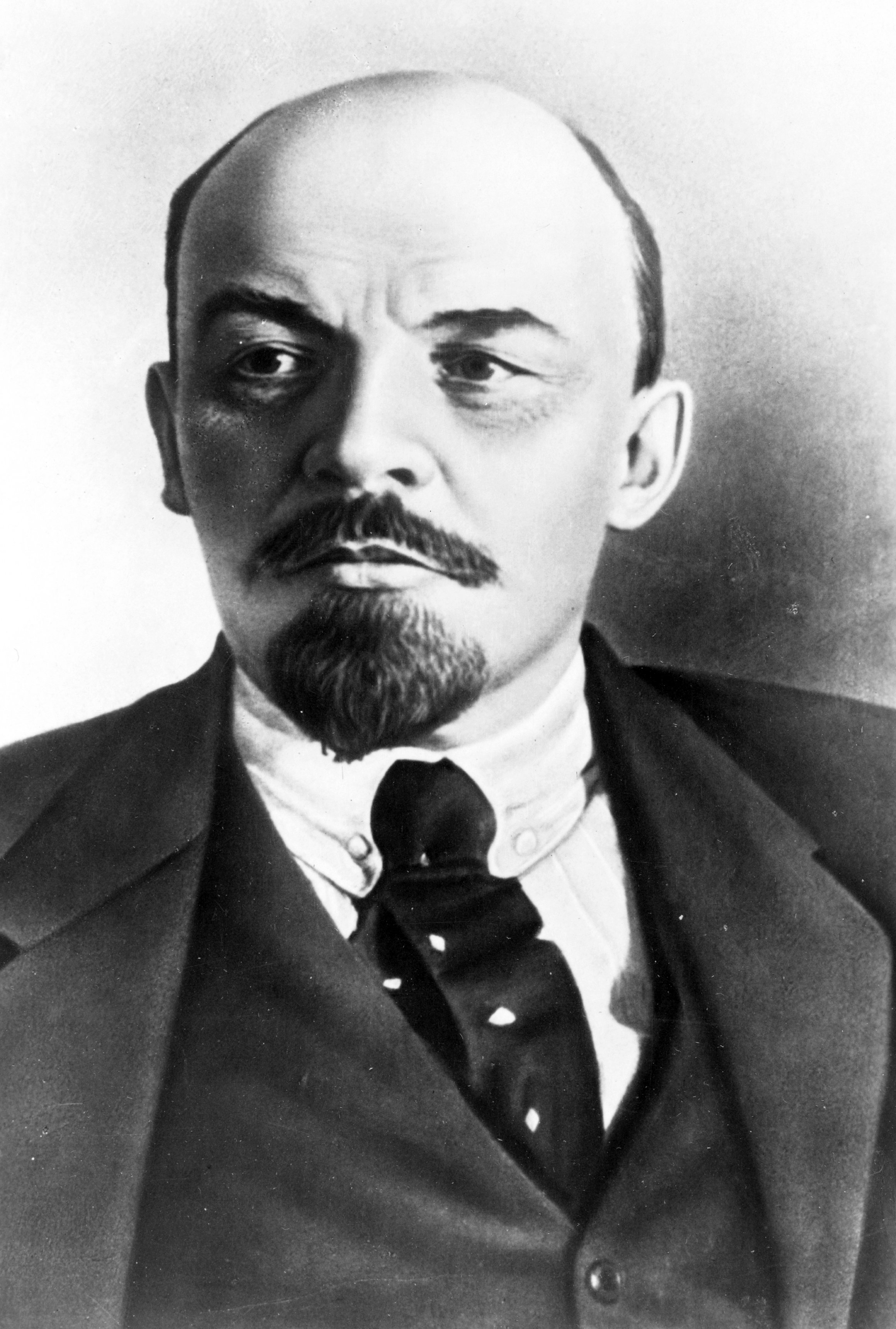
Lenin agreed with Marx’s idea that only revolutionary violence could bring about political change. But Lenin believed a highly centralized, tightly disciplined vanguard (leading group) of professional revolutionaries would lead the revolution. This vanguard would make up the Communist Party. Marx’s idea of the dictatorship of the proletariat became, in Lenin’s thinking, the dictatorship of the Communist Party, which claimed to represent the proletariat.
Communism in practice
In practice, Communism has varied from one Communist country to another. But until the late 1980’s, certain basic features of Communism were shared by all Communist countries.
One of these features was totalitarianism. In totalitarian countries, the government controls almost all aspects of people’s lives. Communist countries also were party states. In a party state, the ruling party dominates all government bodies. The countries had centrally planned economies, also called command economies. In such economies, the state owned the means of production, and the government planned most economic activity. Finally, Communist countries valued cooperation and group needs over personal freedom. In other words, they considered the well-being of the state and society to be more important than that of the individual.
The role of the party.
A Communist party performed four important roles in a Communist system. (1) It carefully selected party members. (2) It maintained total control over public policies. (3) It supervised every branch of government. (4) It carefully screened people for key jobs throughout society.
In Communist countries, the party functioned according to an idea introduced by Lenin called democratic centralism. According to this idea, all party members were required to support all decisions made by the party. Disagreement with the party line—that is, the party’s policies—was called factionalism and could result in dismissal from a Communist party, or worse. Joseph Stalin and the Communist Party in the Soviet Union, for example, executed or imprisoned millions of people who did not agree with Communist ideas. Known as political dissenters, these people were imprisoned, often in forced labor camps known as Gulags.
Communist party structures
have varied from country to country. But Communist parties have shared certain basic characteristics.
A traditional Communist party is structured like a pyramid. At the bottom of the pyramid are numerous local party organizations, formerly called cells. In the middle are various regional and district organizations. At the top is a party congress, made up of delegates from party organizations throughout the country.
Party congresses meet periodically, usually every three to five years. During meetings, each congress votes on issues facing the country and the party. It also elects the party’s central committee, an administrative body.
Party congresses have more power in theory than in practice. They almost always vote according to the wishes of the most important Communist party leaders. In addition, members of the central committee are already chosen before each congress, which merely approves those choices.
The most powerful administrative bodies are the central committee, the politburo, and the secretariat. The central committee carries out the work of the party between congresses. It also approves the elections of members of the politburo and the secretariat. The politburo sets all important government policies. The secretariat manages the daily work of the party. The head of the secretariat, called the general secretary, is the most powerful person in the party and in the country.
The party state.
Communists believed that a state dominated by a Communist party was necessary to defend Communist countries against capitalist influence from other countries. With this belief, secret police as well as regular police forces and a strong military establishment were needed until Communism had been attained worldwide. Marx believed, however, that in a Communist society, the powers of the state—and eventually the state itself—would gradually disappear. No Communist country, however, ever eliminated the state.
In Communist states, all power rested with that state’s party. The people who led the party also headed the government. The individuals who made up the government bureaucracy (system of officials who carry out governmental functions) were all party members.
Communist governments established policies that they claimed were democratic, and thus representative of Marx’s ideals. But these policies were not democratic. For example, governments held local and national elections but limited the choice to only one candidate or to candidates of a single party. Legislatures that supposedly represented the people passed without question all laws proposed by Communist party leaders. Constitutions that, in theory, protected people’s rights were repeatedly violated by Communist leaders.
The centrally planned economy.
Marx predicted that central planning of industrial and agricultural production would guarantee economic efficiency, job security, and income equality. Communist countries therefore nationalized (put under government control) factories and farms and established procedures for planning economic activity.
Communist planners made decisions that in non-Communist countries are made by individuals and corporations. Government planners determined what goods would be produced, when and where they would be produced, and what raw materials would be used in their manufacture. The planners also decided to whom and at what prices the finished products would be sold. The planners had to ensure that resources and skilled labor were in the right place at the right time.
Communist economies experienced some success. Centralization enabled governments to focus their energies and rapidly industrialize their countries. It also helped the Soviet Union build up its military forces. Literacy and employment rates soared in Communist countries. In addition, Communist countries distributed income fairly equally. Therefore, the difference between the lowest and the highest wages was much smaller in Communist countries than in capitalist countries.
Centrally planned economies, however, also created serious problems. State-set prices did not reflect the actual cost of production, leading to inefficiencies and the wasteful use of resources. The planned economy also failed to provide high-quality goods and services and could not respond quickly to changes in consumer tastes. In many cases, consumer goods and housing were in short supply, and state-run farms and businesses could not keep pace with demand. The shortages occurred partly because worker productivity and creativity lagged. Workers had little motivation to be productive because their wages remained about the same regardless of how much they produced.
In addition, the economy was not as fair as it may have appeared. Communist party leaders and members of the bureaucracy enjoyed privileges denied to other citizens. Party leaders and their families had special access to government cars, well-stocked grocery stores, comfortable housing, and better health care. As a result, they achieved a much higher standard of living than the average citizen, despite similarities in monetary income.
Restrictions on personal freedom.
Communist leaders traditionally considered the needs of society more important than individual rights and liberties. As a result, personal freedoms were severely restricted. The amount of police repression varied, however. For example, when Joseph Stalin was dictator of the Soviet Union from 1929 to 1953, hundreds of thousands of Soviet citizens were executed. Millions died in forced labor camps. The government also ordered people to spy on their neighbors and encouraged them to inform on their family members. Stalin adopted these measures to eliminate real and imagined opposition to his policies. Similar conditions existed in China under Mao Zedong, who ruled that country from 1949 to 1976.
After Stalin’s death in 1953, most Communist governments shifted from open terror to more subtle forms of repression. For example, they threatened to fire people from their jobs or to deny them a new apartment if they opposed the government. Governments also used material rewards to encourage obedience from citizens. A similar transition occurred in China after the death of Mao.
In some Communist countries and during some periods, individuals were free to do and say what they wished among friends and family. But people were not allowed to publicly criticize Communist party leaders or policies or to openly oppose the Communist system. Governments also did not permit people to establish organizations or publish ideas that opposed Communism. All these restrictions existed despite the fact that many Communist governments had constitutions claiming to guarantee the freedoms of speech, press, and assembly.
Communists in most countries discouraged religious worship because they considered religion a threat to Communism. Church members found it more difficult to advance in their jobs and were not allowed to join a Communist party.
Communism in the Soviet Union
Before 1917.
Marx had expected his theories to be tested in Germany, the United Kingdom, or some other highly industrialized country. But the first Communist-controlled government was in Russia, whose economy depended primarily on agriculture, not manufacturing.
During the late 1800’s, Russia began to modernize. Although the country was still largely agricultural, its manufacturing industry began to flourish. As industrialization increased, discontent grew among the rising middle class and workers in the cities. In addition, a series of bad harvests in the 1890’s caused starvation among the peasants. During this period, revolutionary activity grew, and radical ideas—including Marxism—became popular.
In 1898, Marxists founded the Russian Social Democratic Labor Party. The party split into two groups in 1903. The Bolsheviks, led by Lenin, accepted his idea of a small Communist party made up of professional revolutionaries. The Mensheviks wanted the party to have wider membership and to reach decisions through democratic methods.
In 1905, large numbers of Russians revolted against the czar and forced him to establish an elective assembly. During the next several years, the government enacted some reforms. But World War I (1914-1918) created more problems for Russia. The nation suffered heavy troop losses on the front and food shortages at home. In 1917, the people overthrew the czar. A democratic provisional (temporary) government was set up.
In autumn 1917, the Bolsheviks, led by Lenin, seized power and established a Communist government. When the Bolsheviks took over, they had fewer than 300,000 members in a country of more than 160 million people. The coup succeeded partly because the provisional government leaders did not want to withdraw from the war, and they could not carry out reforms while the war continued. Lenin immediately pulled Russia out of World War I after he came to power. Consequently, reforms could be carried out somewhat more easily. The Bolsheviks also succeeded because of their effective organization and their appealing slogans, such as “Bread, Peace, Land.”
Under Lenin.
Lenin led Russia from 1917 until his death in 1924. For a short time, he let the peasants keep farmland they had seized. He permitted workers to control the factories and to play important roles in local government. But the government soon tightened control and forced the peasants to give the government most of their products. The government also took over Russian industries and set up central management bureaus to run them. In addition, the state created a secret police force called the Cheka.
Soon after Lenin came to power, Russia made peace with Germany, but from 1918 to 1920 Russia was torn by civil war between Communists and non-Communists. The Communists defeated their rivals, who were divided and poorly organized. From the start, Lenin used force and terror against his political opponents. By 1921, conditions had become disastrous throughout the country. Peasant and sailor revolts broke out. The world war, revolution, and civil war had brought Russia near economic collapse.
In 1921, realizing the need for a change in policy, Lenin introduced the New Economic Policy (NEP). The NEP called for Communists to cooperate with certain groups that were considered enemies of Communism. These included shopkeepers, peasants, engineers, scholars, and army officers. Russia’s economy recovered steadily under the NEP. In 1922, the country became known as the Union of Soviet Socialist Republics (U.S.S.R.), or the Soviet Union.
By the time Lenin died in 1924, the Soviet Union had become a one-party state. All non-Communist political parties had been banned, and all public organizations—such as professional associations and labor unions—had become tools of the Communists.
Under Stalin.
After Lenin died, leading Communists in the Soviet Union struggled for power. Through plotting and trickery, Joseph Stalin gained complete control of the Communist Party and the Soviet government by 1929. Until his death in 1953, he ruled with an iron hand. The Soviet Union’s economy and influence abroad grew rapidly—but at a great cost in human life and personal freedom at home.
Stalin established a centrally planned economy in the Soviet Union. In 1928, he began the five-year plans, which were comprehensive economic plans for the country. The first plan included provisions (laws) that combined small peasant farms into collective farms, large farms owned and controlled by the government. In the early 1930’s, Stalin ordered millions of peasants murdered or exiled when they resisted giving their land to collective farms.
Millions of Soviets opposed Stalin’s policies during the 1930’s. To crush this opposition, Stalin began a program of terror called the Great Purge. Communists suspected of opposing Stalin or his policies were executed or imprisoned. Stalin ordered many of his earlier Communist associates arrested or put to death. Numerous party officials were labeled “enemies of the people” and forced to confess imaginary crimes. The secret police assisted in the purges, in which army officers and citizens from all walks of life were imprisoned, sent to labor camps, or killed. The peak of mass terror came between 1936 and 1938.
During World War II, political repression in the Soviet Union eased somewhat. The Soviet people rallied to defend their country from invading armies of the German dictator Adolf Hitler. But after the war ended, Stalin’s secret police returned to using terror to maintain strict control over the people.
Under Stalin’s successors.
Shortly after Stalin died in 1953, Nikita S. Khrushchev became head of the Soviet Communist Party. In 1958, Khrushchev also became the head of the Soviet government. He strongly criticized Stalin for his rule by terror. Khrushchev relaxed political control over writers, artists, and scholars. He also introduced reforms designed to improve the productivity and efficiency of the economy. But Khrushchev’s reforms resulted in only slow gains.
In 1964, Communist Party officials forced Khrushchev to retire. Leonid I. Brezhnev replaced Khrushchev as head of the Communist Party. Brezhnev reestablished many of Stalin’s rigid cultural and economic policies but did not return to rule by terror.
After Brezhnev’s death in 1982, two other leaders briefly headed the government and the party. But no major changes were enacted until Mikhail S. Gorbachev became head of the country in 1985. Gorbachev’s reform policies and the eventual collapse of Soviet Communism are discussed later in this article, in the section The decline of Communism.
The spread of Communism
The Comintern.
The Bolsheviks thought the Russian Revolution of 1917 would spark revolution in other countries. But Lenin soon realized that worldwide revolutions would require careful direction and organization. In 1919, he established the Comintern (Communist International). The Comintern united all Marxist groups around the world who accepted Lenin’s ideas on revolutionary violence and Communist party organization.
The only Communist government established with the help of the Comintern was in Outer Mongolia (now called Mongolia) in the early 1920’s. The Comintern succeeded there partly because Mongolians feared domination by the Chinese more than by the Soviets. Stalin had little faith in the Comintern, and he dissolved it in 1943.
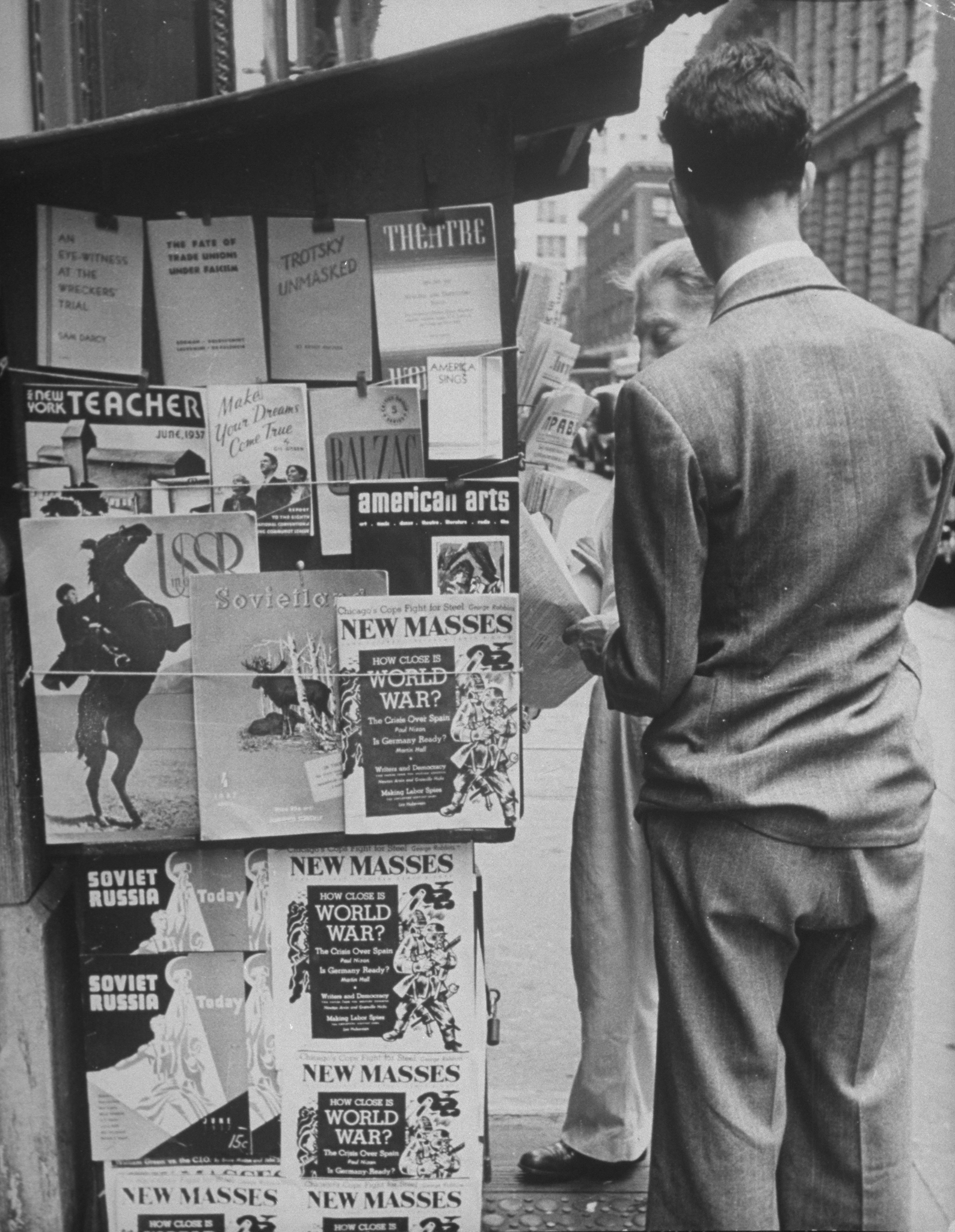
World War II.
The international instability that resulted from World War II provided opportunities for Communist gains in many countries. In 1939, the Soviet Union and Germany signed a nonaggression pact, an agreement in which they promised not to attack each other. A secret provision of the pact declared that certain areas in Europe would be divided between the two countries. In 1939 and 1940, the Soviet Union took over the Baltic countries of Latvia, Lithuania, and Estonia, and parts of Poland, Finland, and Romania. All of this territory became part of the Communist Soviet Union.
Toward the end of World War II, the Soviet Union helped free many countries from German and Japanese control. The presence of Soviet troops enabled the U.S.S.R. to set up Communist-controlled governments in several of these countries, including Bulgaria, East Germany, Hungary, Poland, Romania, and North Korea. Winston Churchill, the former British prime minister, warned in 1946 that an “iron curtain” had descended across Europe, dividing eastern Europe from western Europe. Although supposedly independent, the Iron Curtain countries were actually Soviet satellites (countries controlled by the Soviet Union). The satellites had to follow Soviet foreign policy and adopt Communist political and economic practices.
In some other countries, Communists who had led national resistance movements during World War II grew stronger. Local Communists took over the governments of Albania, Yugoslavia, and Vietnam near the end of the war with little or no help from the Soviets. A Soviet-supported Communist regime gained complete control in Czechoslovakia in 1948. Communists also became important political forces in France and Italy. 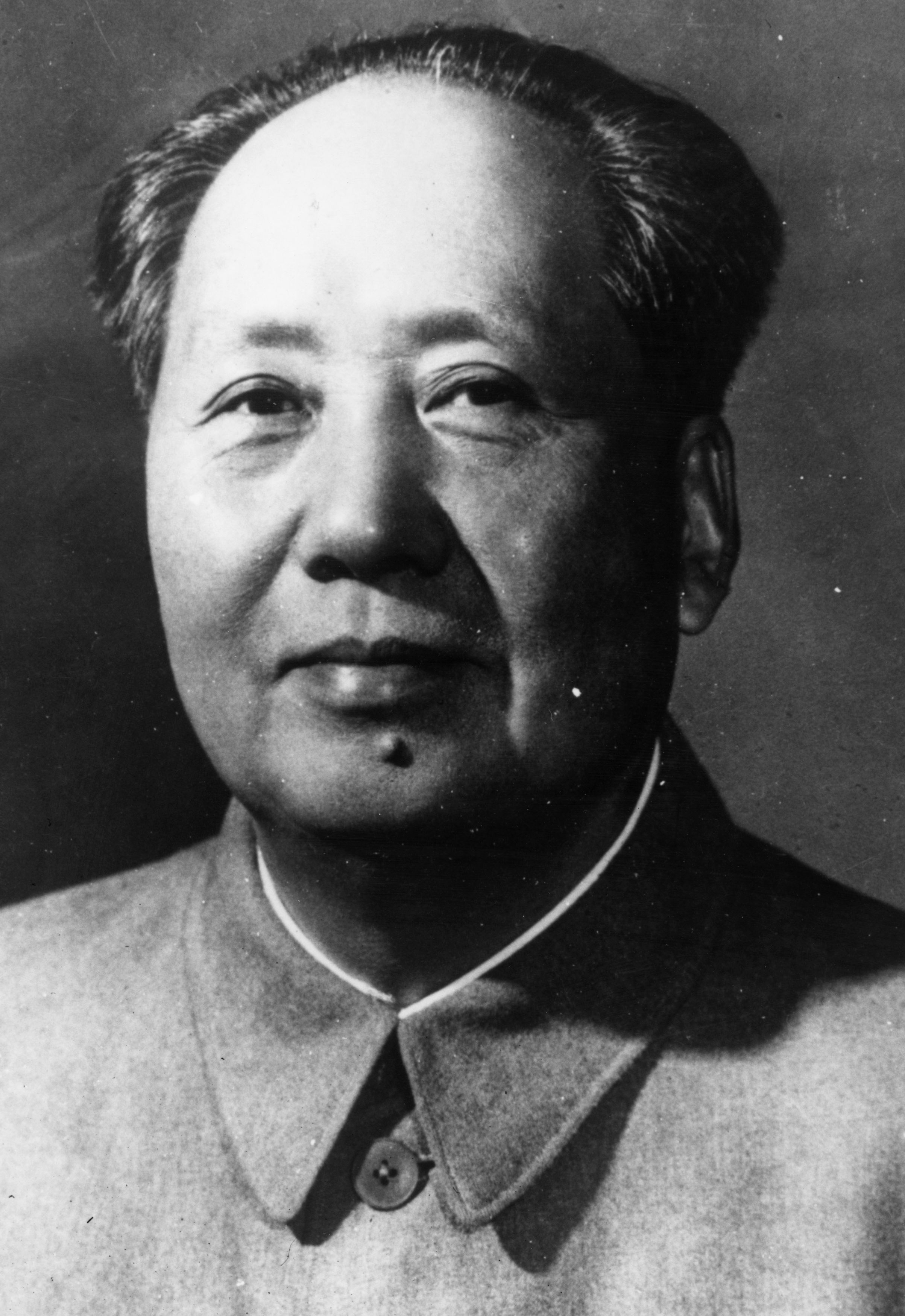
In China, the Communists and the ruling Nationalist Party both fought the Japanese, who had invaded the country during the 1930’s. After World War II, a civil war broke out in China between the Communists and the Nationalists. The Communists, led by Mao Zedong, gradually gained control by winning widespread peasant support in the countryside. By 1949, they had taken over mainland China.
From the late 1940’s to the 1960’s, most other attempts by Communists to take power failed. For example, Communists in Greece, Malaya (now part of Malaysia), and the Philippines fought guerrilla wars but failed to gain power. Guerrilla warfare is conducted by fighters who are not part of any regular army. Armed forces from Communist North Korea invaded non-Communist South Korea in 1950. The invasion resulted in a three-year war between the North Koreans backed by Communist countries and the South Koreans backed by non-Communist nations. Neither side won complete victory in the Korean War (1950-1953), and Korea remains divided between a Communist north and a non-Communist south.
The only major gain by Communists during this period occurred in Cuba. Fidel Castro became dictator of Cuba in 1959, and two years later, he declared his government to be Communist.
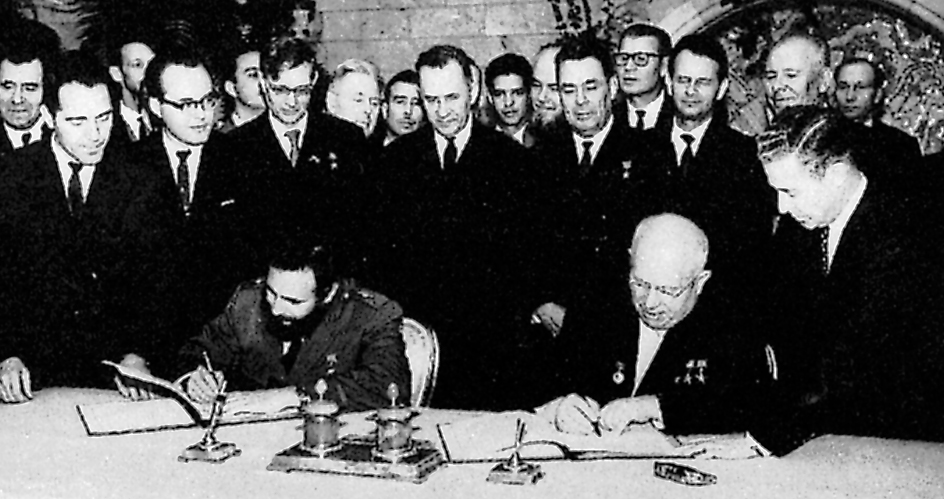
Expansion in Southeast Asia.
In 1946, the Communist leader Ho Chi Minh led a nationalist uprising in the colony of French Indochina. By 1954, Indochina had been divided into Communist North Vietnam, non-Communist South Vietnam, and neutral Cambodia and Laos. Even after the establishment of non-Communist governments in their countries, rebels in Cambodia, Laos, and South Vietnam continued to fight for Communism. North Vietnam sent troops and supplies to help the Communists, and China and the Soviet Union also sent equipment.
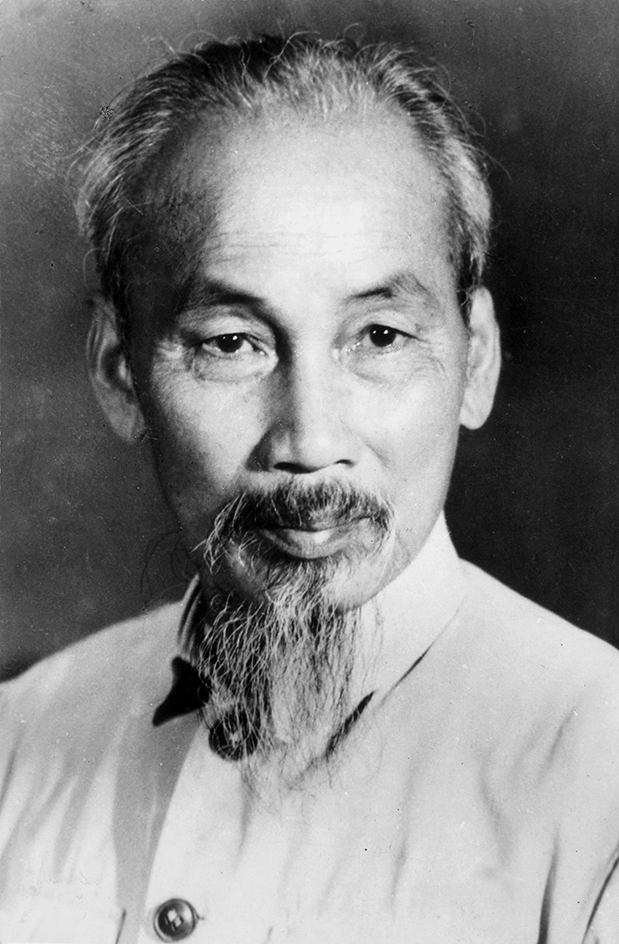
The struggle in South Vietnam developed into a major conflict, the Vietnam War (1957-1975). The United States sent troops to support South Vietnam. A cease-fire agreement ended U.S. participation in 1973, but the war continued until the Communists won full control of South Vietnam in 1975. In 1976, the Communists unified North and South Vietnam into the single nation of Vietnam. Communists also conquered Cambodia in 1975. In Laos, the government came under Communist control in 1975.
Communist influence in other areas.
In Africa, a left wing military group controlled the government of Ethiopia from 1974 to 1991. The military government adopted socialist policies and developed close relations with the Soviet Union. In 1975, leftist guerrilla forces formed Marxist-Leninist governments in Angola and Mozambique. They controlled the governments of these countries until 1990. Other African nations had Marxist-Leninist governments for short periods in the 1970’s and 1980’s. In Central America, an alliance of Marxist-Leninist groups called the Sandinista National Liberation Front held power in Nicaragua from 1979 to 1990. In 1990, however, a candidate backed by 14 anti-Sandinista parties won Nicaragua’s presidential election.
In southwestern Asia in 1978, a Marxist-Leninist party seized power in Afghanistan. However, many Afghans rebelled against the new government. In 1979, the Soviet Union sent troops into Afghanistan to prevent the overthrow of the government. The invasion resulted in a lengthy conflict between Soviet troops and Afghan rebels. The Soviet occupation of Afghanistan ended in 1989. The rebels overthrew the government in 1992.
The Cold War
After World War II, the United States and the Soviet Union competed with each other for international influence and allies in the Cold War. Both countries attempted to gain international power by influencing other governments in their favor, often with military or economic aid.
The Cold War was characterized by mutual distrust, suspicion, and misunderstandings between the two sides. These conditions led to occasional confrontations. For example, both the United States and the Soviet Union supplied military aid to opposing forces in the Korean War. Another confrontation came in 1962, when the United States learned that the Soviet Union had secretly installed missile stations in Cuba that could launch nuclear attacks on U.S. cities. After a week of extreme international tension, the Soviet Union agreed to United States demands and removed the missiles.
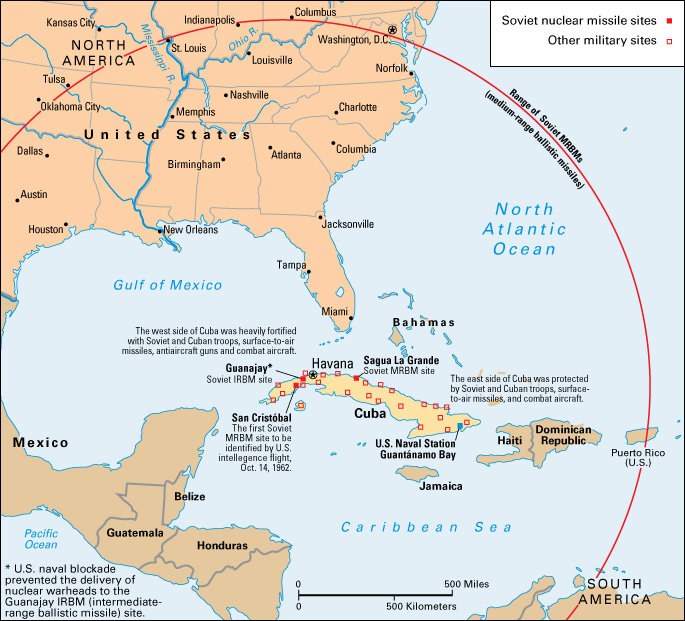
Alarmed by Communist expansion in Eastern Europe and in China, the United States and its allies began giving military and economic aid to non-Communist countries. They also pledged to help nations threatened by Communist take-overs. In 1949, Western nations formed the North Atlantic Treaty Organization (NATO). This alliance provided its members with mutual defense against a possible attack by the Soviet Union or any other aggressor. In 1955, the Soviet Union and its Eastern European allies signed the Warsaw Pact, a treaty to provide for their common defense. The signers claimed they drew up the pact in response to the creation of NATO. Each side invested in a massive arms race, a competition to acquire nuclear weapons and other arms.
In the 1950’s, fear of Communism in the United States led to widespread accusations and investigations of suspected Communist activities. This pursuit of Communists came to be called McCarthyism, after Senator Joseph R. McCarthy, a Wisconsin Republican. McCarthy charged that many individuals were Communists or Communist sympathizers, usually with little evidence to support his charges. Nevertheless, many people lost their jobs or suffered in other ways after being labeled a Communist.
The decline of Communism
By the late 1970’s, Communism was in crisis in many parts of the world. The population of Communist China had almost doubled under Mao Zedong, and the Chinese government was barely able to provide adequate food for its people. Dissatisfaction with Communism in the Soviet-controlled countries of Eastern Europe was growing stronger.
The Soviet Union was confronted with serious economic problems, a dissatisfied middle class, and disappointment with the Communist political system among key members of the political elite. Hostility among the country’s numerous ethnic groups had smoldered for years. Many non-Russians resented the power of ethnic Russians and began to demand more control over their own affairs. In addition, corruption was growing among members of the Communist Party bureaucracy. In Western Europe, Communist parties faced declining electoral support by the late 1970’s.
By the late 1980’s, most Communist countries had experienced long periods of little or no economic growth. Centralized planning proved to be inefficient, and it hindered the development of new technologies. As a result, most Communist countries could not compete economically with Japan and the industrial powers of the West.
The Soviet Union under Gorbachev.
Mikhail S. Gorbachev became head of the Soviet Communist Party in March 1985. When he took power, the Soviet Union faced a declining economy burdened by heavy military expenses. These expenses included maintaining troops in Eastern Europe, supporting unpopular leftist regimes in developing countries, and competing in the arms race with the United States. In addition, Soviet technology lagged far behind that of the West, and aging industrial equipment contributed to economic inefficiency. Inefficiency, in turn, caused shortages of food and other consumer products for Soviet citizens.
Dissatisfaction with the Communist system caused many people to search for alternatives. Gorbachev and members of the Communist Party elite observed traditions and cultures of Western countries through their travels there. Other Soviets learned about non-Communist countries through foreign radio broadcasts, contemporary books and motion pictures, and professional journals. Citizens began to want the Soviet Union to become more like Western countries.
In response to the U.S.S.R.’s problems, Gorbachev began a program of reform. First, he introduced perestroika, or restructuring of the Soviet political and economic systems. Political reforms included the legalization of non-Communist parties and candidates and the creation of a functioning parliament. Economic reforms included lifting the ban on private businesses run by families and individuals, and modifications in the central planning system. To help win popular support for reform, Gorbachev increased freedom of expression in a policy called glasnost (openness).
Gorbachev also worked to improve Soviet relations with other countries. In 1987, he and U.S. President Ronald Reagan signed a treaty that called for the dismantling of all ground-launched Soviet and U.S. intermediate-range nuclear missiles. Relations with the United States also improved when the U.S.S.R. withdrew its troops from Afghanistan in 1989. Gorbachev’s acceptance of the collapse of Communism in Eastern Europe further reduced tensions with the West.
Gorbachev was chosen for the new office of president of the U.S.S.R. in 1990. But his policies had begun to provoke the opposition of hard-line Communists in the party. His plans to give the 15 republics of the Soviet Union more control over their own affairs further angered the conservatives. In August 1991, leading hard-line Communist officials staged a coup against Gorbachev and removed him from power. But the coup soon failed, and Gorbachev resumed his duties. Shortly after returning to power, Gorbachev resigned as the party’s head but remained president of the national government. He also ordered the suspension of all Communist Party activities.
By late 1991, most of the republics that made up the Soviet Union had declared independence. In December, many of these former Soviet republics formed a loose organization called the Commonwealth of Independent States (CIS). Gorbachev resigned as head of the Soviet government, and the Soviet Union formally ceased to exist.
China after Mao.
The Chinese economy was highly inefficient by the time Mao died in 1976. This condition was largely because of the failure of centralized planning, begun in the 1950’s, including the establishment of huge collective farms. After Mao’s death, a group of economic reformers led by Deng Xiaoping took control of the Chinese Communist Party. The new leadership allowed a return to private farming and the formation of small private businesses, such as tailor shops and restaurants. The government also reversed its policy of refusing foreign investment. It designated many coastal areas as special economic zones where foreign investors could produce consumer goods for export. These reforms resulted in economic growth and in an improvement in living standards for many people.
The Deng regime maintained Communist Party control over the political system, however. In the late 1980’s, many Chinese university students began demanding political reforms. In 1989, hundreds of thousands of students and workers demonstrated in Beijing’s Tiananmen Square and in several other cities. They called for increased democracy and an end to corruption in government. However, the Chinese military crushed the demonstrations, and many protesters were killed. Shortly after the demonstrations, Communist Party and secret police controls were tightened.
In Eastern Europe,
many people had always opposed Communism. Over the years, some Communists there also began to resist Soviet domination. In Hungary, some of these Communist reformers joined non-Communists in an uprising against Soviet control in 1956. Soviet armed forces invaded Hungary, put down the rebellion, and installed a new Communist regime. Soviet armed forces also crushed strikes and riots in East Germany in 1953.
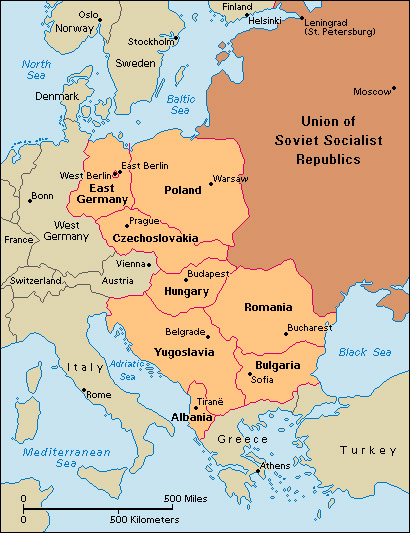
The Communist government of Czechoslovakia, led by Alexander Dubček, adopted a reform program in 1968. The program—sometimes known as Prague Spring—included some genuine political competition, less centralized planning of the economy, and an end to censorship. Soviet leaders, fearful of losing control over Czechoslovakia, ordered troops into the country. Under pressure from the U.S.S.R., the Czechoslovak Communist Party replaced Dubček with a rigid pro-Soviet government in 1969.
In 1980, workers in several cities in Poland went on strike. The strikers called for higher wages, better working conditions, and political reforms. They also formed a free labor-union organization called Solidarity. In 1981, the Polish government, under pressure from the Soviet Union, imposed martial law and suspended Solidarity’s activities. The Polish government officially outlawed the free labor-union organization the following year.
In 1989, Communist parties began to lose control over the governments in four Eastern European countries that had been dominated by the Soviet Union since the late 1940’s. These countries were Poland, Hungary, East Germany, and Czechoslovakia. People in these countries realized that the Soviet Union, under Gorbachev, would not use armed forces to prevent political change. This realization was one factor that led to the rapid lifting of restrictions.
The Polish government ended its ban on Solidarity in 1989. That year, negotiations between Solidarity and the government led to partially free elections in which pro-Solidarity and other non-Communist candidates won control of the legislature. A coalition government was set up in the summer of 1989. It was the first Polish government since World War II not controlled by Communists.
Also in 1989, thousands of East Germans who had traveled to Hungary went to West Germany by crossing over a newly opened border between Hungary and Austria. Anti-Communist demonstrations soon followed in East Germany, and the country’s hard-line Communist leadership resigned. In November, East Germany opened its long-closed borders with the West.
The disintegration of Communist authority in East Germany sparked anti-Communist demonstrations in Czechoslovakia. These demonstrations quickly brought about the downfall of the Communist government, and members of liberal opposition groups took power. In Romania, a bloody revolt led to the execution of Communist dictator Nicolae Ceauşescu. A group of former Communist Party members and officials called the National Salvation Front took control of the country. Communists who favored reforms also took power in Bulgaria.
In 1990, free multiparty elections were held in Bulgaria, Czechoslovakia, East Germany, Hungary, and Romania. Non-Communist parties came to power in these elections in Czechoslovakia, East Germany, and Hungary. The new East German government agreed to the unification of East and West Germany. Unification took place on Oct. 3, 1990. In Romania, the winning group was the National Salvation Front, which ran candidates as a political party.
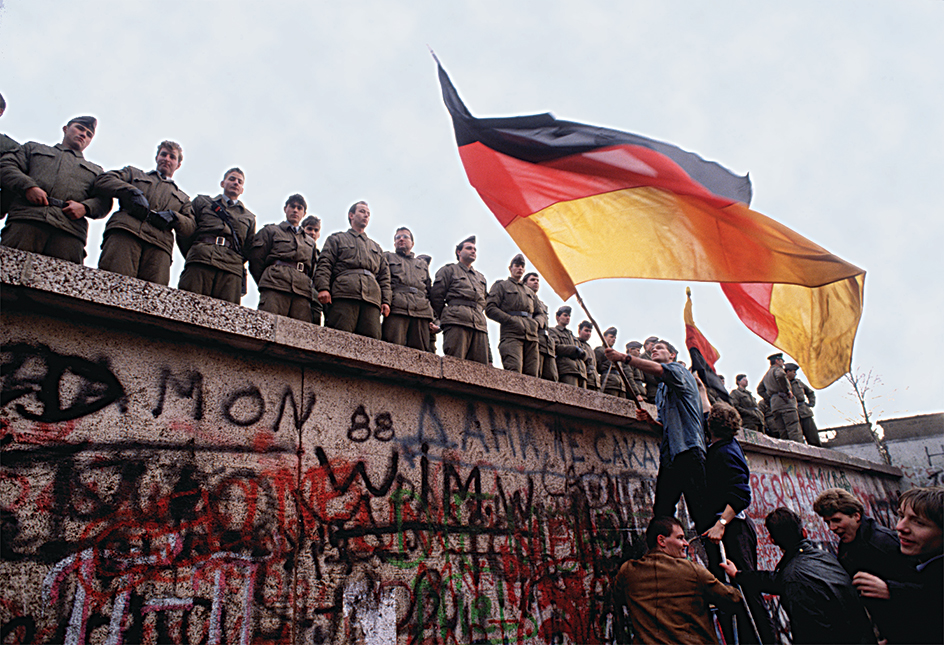
In Bulgaria, the former Communist Party, which had renamed itself the Socialist Party, won the election. In 1991, the Communist Party won multiparty elections in Albania. But protests by Albanians led the Communists to form a coalition government with other parties. By early 1992, non-Communists took control of the governments in both Albania and Bulgaria.
Communism after the fall of the Soviet Union
Communism was in retreat around the world as a system of government in the early 1990’s. Its importance as a political and economic theory had also been reduced.
In Communist countries.
By 1992, Communists held a monopoly on power in only a few countries, including China, Cuba, Laos, North Korea, and Vietnam. But the governments of China and Vietnam were introducing economic reforms.
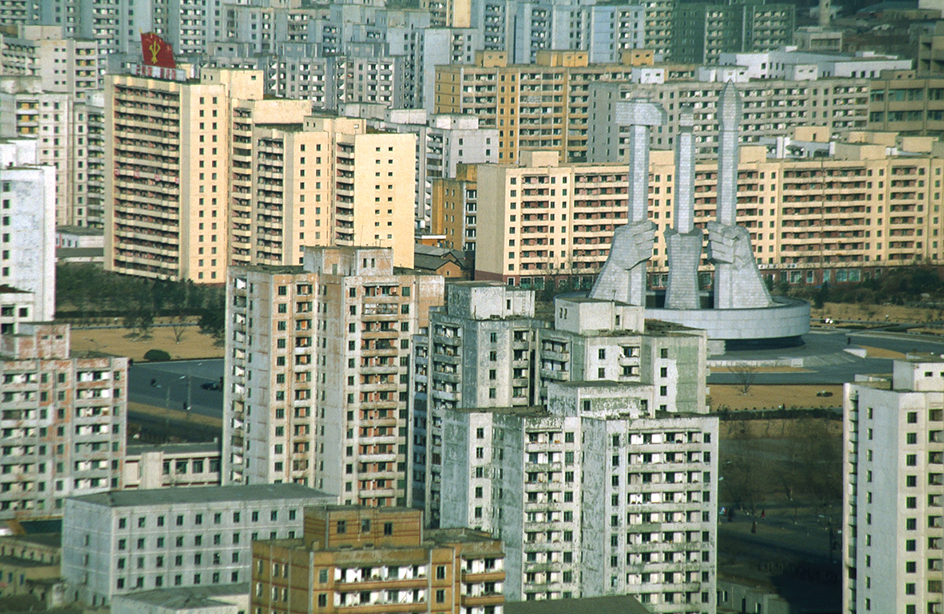
In non-Communist countries.
Hard-line Communist parties continued to exist in France, Greece, and Portugal, though they had relatively minor representation and influence in legislative bodies. The once powerful Italian Communist Party split, and the larger of the two parties that resulted dropped its Marxist policies. Membership in the Communist Party of the United States declined dramatically. In Eastern European countries and former Soviet republics, most Communist parties had reidentified themselves as socialist parties and abandoned hard-line Communist principles.
